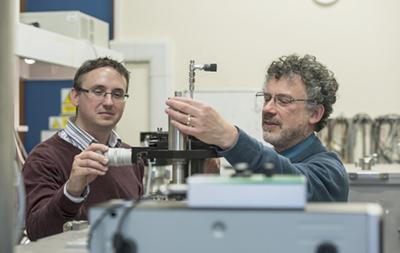Research on hydrogen bonding recognised by a leading academic journal

Dr Russell Minns’ work on hydrogen bonds within biomolecules has been highlighted as a significant piece of spectroscopy research. His findings could eventually lead to scientists discovering more about the earliest stages of cancer development within cells.
The Royal Society University Research Fellow’s paper ‘Hydrogen bonds in excited state proton transfer’ will be published in the academic journal Physical Review Letters; Physics.org at the Institute of Physics has nominated it as a highlighted paper.
Russell and his team have employed the state-of-the-art spectroscopy equipment at the Central Laser Facility to examine whether hydrogen bonds within DNA may protect biomolecules against damaging ultra-violet light which can be carcinogenic. They used the ammonia dimer as a model chromophore, the parts of the molecule responsible for its colour, to mimic the hydrogen bonding interactions in DNA for these experiments.
“Usually in spectroscopy we focus on individual molecules but it is also important to understand how molecules interact and are connected with each other,” he explains. “This is early stage research but has potential to help us understand the stability of DNA as well as the initial stages of cell damage.”
Hydrogen bonding is important throughout photobiology. In almost all photobiological processes, light is initially absorbed by a central chromophore. It is connected to the surrounding protein and solvent environment by a network of hydrogen bonds and these play a vital, but not yet understood role, in cell dynamics and help control the way the protein works.
Related Staff Member
Links to external websites
The University cannot accept responsibility for external websites.
